TL;DR – No flaky builds because of “data‑center air” at Bitrise! We built our own chassis that can talk to the Bitrise scheduler, can pre‑cool itself, and squeezes 32 Mac minis into a 6 rack unit oversized pizza box—while looking downright gorgeous doing it. 🎉 We call it the mini Orchard. 🍎🍏🍎
Why a Mobile DevOps company is suddenly wielding a laser cutter
I feel super proud of what we made here. We started as a software company and we are still one, but our relentless need to make customer builds faster, more reliable, and less “why did it pass on my laptop?” shoved us deeper and deeper down the stack—until we hit the physical layer and thought, “hey, this could be fun.”
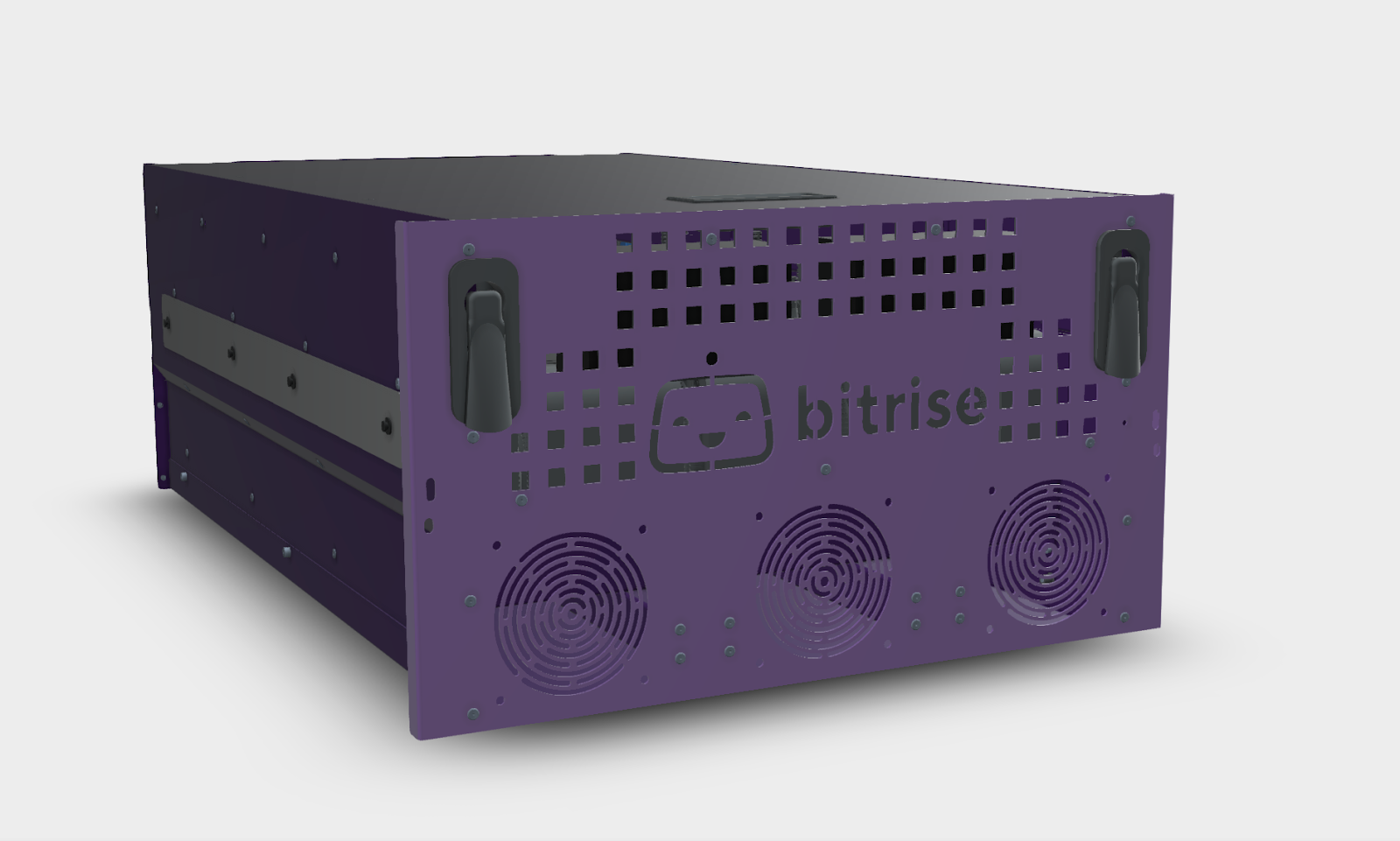
Enter our dual‑plenum chassis (mini Orchard!):
- Two air chambers (bottom = cold, top = hot) separated by a perforated divider. Cold air glides under the minis, then puffs upward to ferry heat away while big PWM exhaust fans keep the whole box in negative pressure so the hot stuff leaves the party early. (PWM stands for pulse width modulation, basically we control the speed of the fan with an integrated circuit board.)
- A dash of fluid‑dynamics nerdery: we oversize the chassis fans by ~10 % relative to all the device fans combined. This guarantees the pressure inside always stays a hair below ambient—translation: no rogue heat pockets.
- Temperature sensors in all the fun spots feed a ΔT control loop. If any sensor yells “I’m hot,” the fans spin up; once everyone chills out by 2 °C, they spin down. Think thermostatic cruise‑control for airflow.
- Top quick‑release service hatch that snaps off faster than you can say “build succeeded”—because swapping a node should feel like ejecting a floppy disk, not reverse‑engineering iOS simulators.
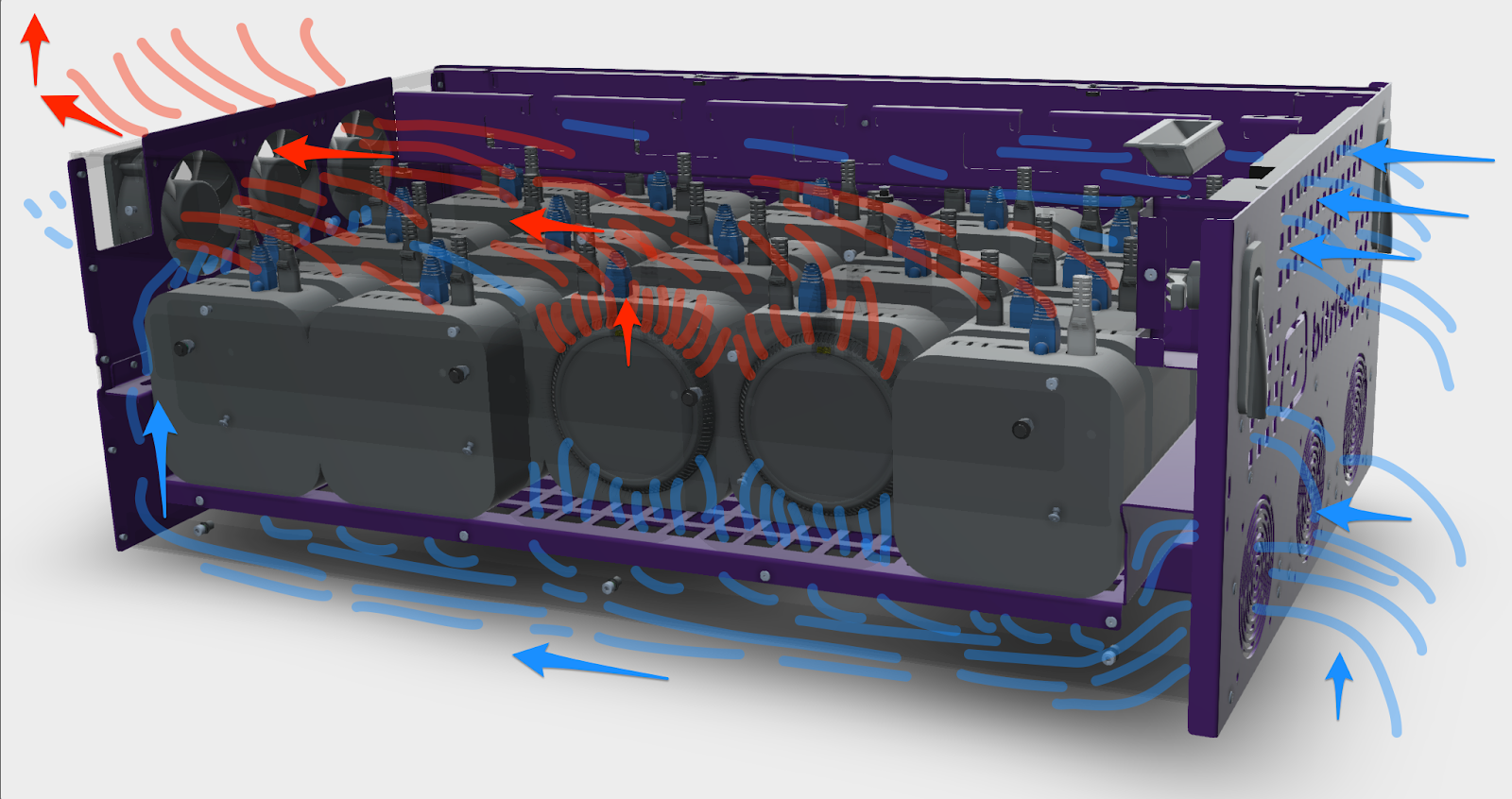
The secret sauce: fan control wired into our control plane
Here’s where it gets spicy‑nerd. The same Bitrise scheduler that juggles your CI jobs now can whisper to the chassis:
- The scheduler sees a workload spike coming.
- It can group those builds onto compute nodes living in the same chassis (like data‑locality, but for wind).
- Before the first test even boots, it can fire a pre‑cool command that cranks the exhaust fans up to a “negative‑pressure margin.” Result: no thermal lag, zero throttling, and builds stay predictably fast.
That tight loop between our workload scheduler and sheet metal is the kind of vertical integration that lets us out‑optimize generic data‑center gear—and honestly, it feels just super cool. 😎
Turbo‑Nerd Nuggets (straight from the airflow buffet)
- Rack‑zenith aesthetics: 32 vertically mounted Mac minis in 6U reclaim precious rack real estate and dress the front panel like it’s headlining an 80s synth‑wave laser show.
- Spoiler‑panel party trick: Slot‑in panels (or just power tape 😂) let us reshape airflow on the fly—think gaming‑PC modding, except this rig chews through mobile pipelines instead of polygons.
- Gentle giant vacuum: Exhaust fans pull about 100 Pa of static pressure—picture a vacuum cleaner after a juice cleanse, but when workload hits, you can absolutely dry your hair standing behind a rack cabinet full of these. At absolute peak we measured 117 dB‑A. That's like a helicopter. Earplugs advised.
- Single‑cable sovereignty: One custom board wrangles fan PWM, sensor telemetry, and ESPHome, with loads of HTTP requests to our control plane—RJ‑45 is the new USB‑C.
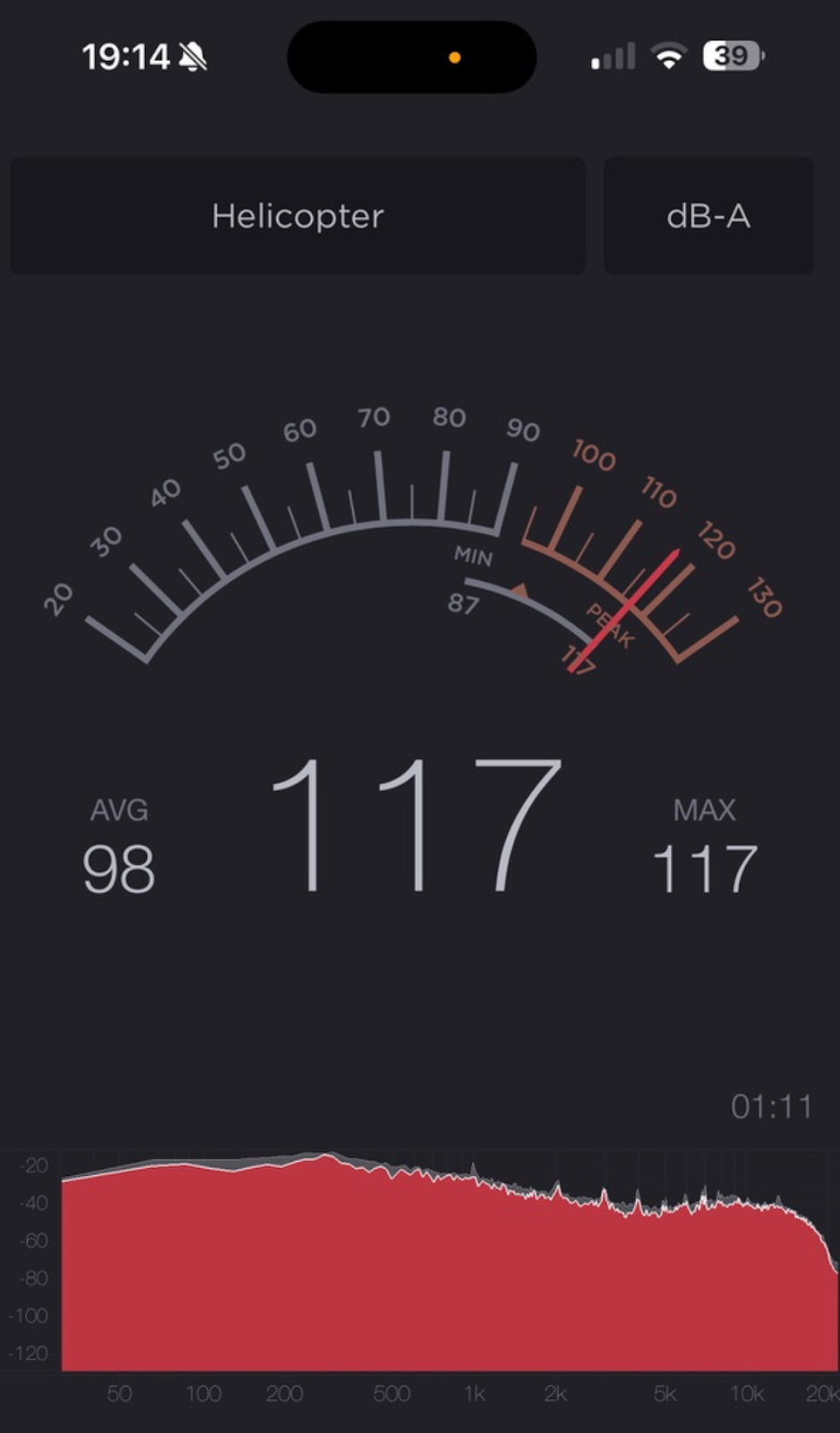
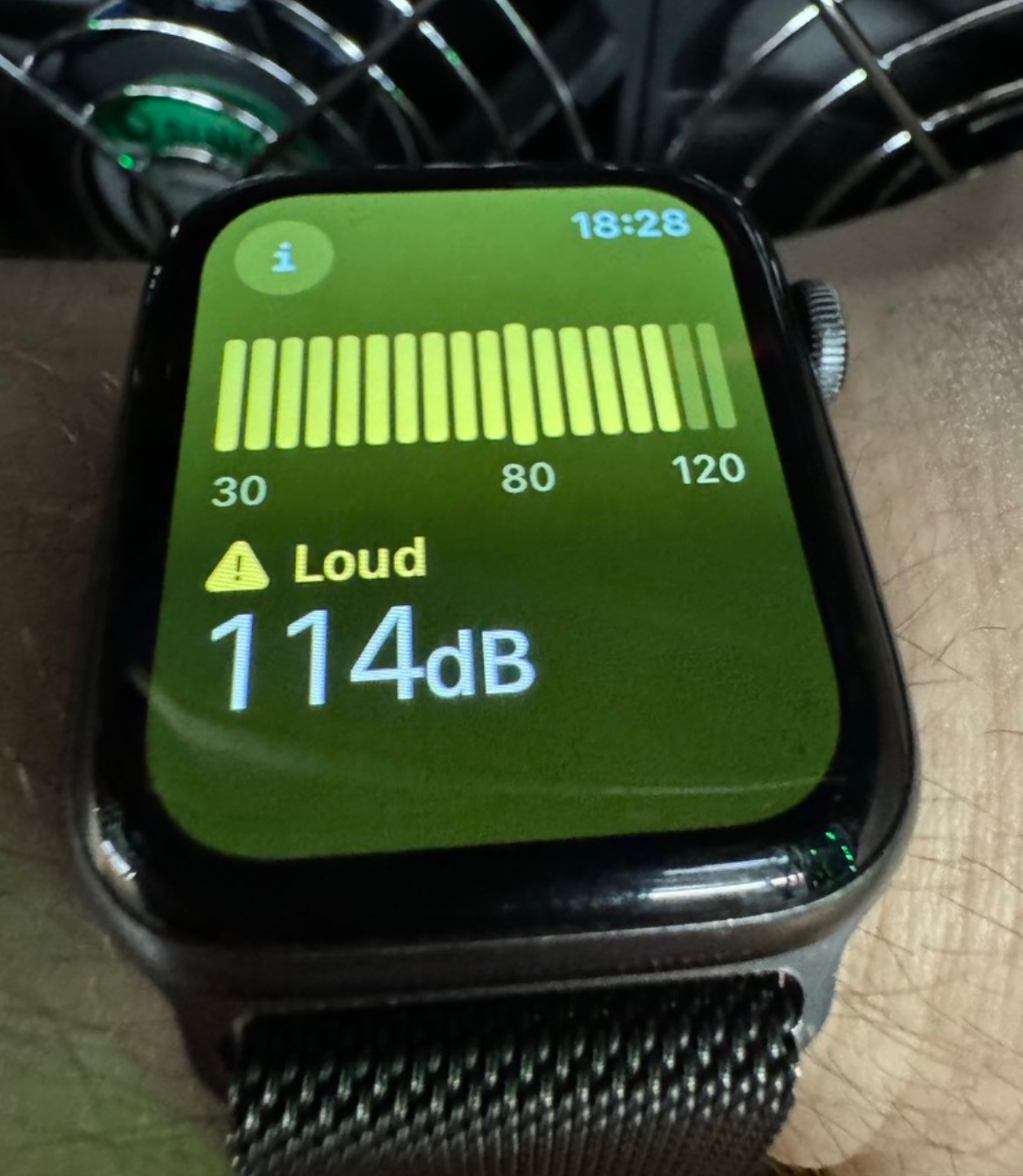
Thermal images
To know what we needed to deal with, we made a lot of measurements of the Mac Minis at different compute load levels. Just look how gorgeous that exhaust glows during a stress test. Not quite designed for cold and hot aisle isolation though.
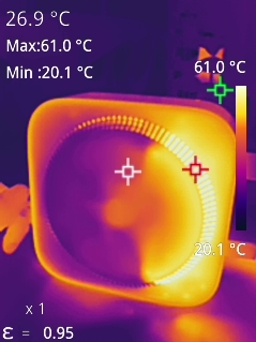
We also took a sneak peek at the inside how things look under the hood during stress tests. You can see from the cables above the gear, with cooling on they do not heat up. The air flows through the chassis, taking the excess heat away from the top (hot) chamber:
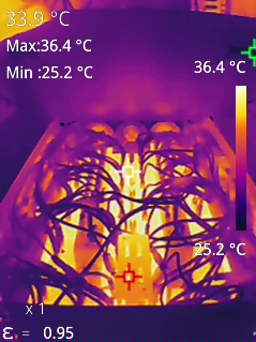
What this means for your builds
- Faster: No throttling when Xcode decides to eat 10 cores for breakfast.
- More reliable: Temperature‑driven flakiness? Not on our watch.
- Consistent: Every run, every day, every chassis—same thermal profile.
Geekiness aside, our compliance squad keeps the white gloves on—every watt of this wizardry runs inside SOC 2‑audited workflows and ISO 27001/SOC 1/PCI DSS certified facilities.
Wrapping up
Building this chassis was incredibly fun and rewarding—a mash‑up of our team running CFD (Computational Fluid Dynamics) sims in our heads instead of lullabies, sheet‑metal design, firmware hacking, printed circuit board planning, soldering and melting some cables, and the collective “let’s‑do‑this” attitude of Bitrise engineers stepping well outside our comfort zone.
The result is absurdly power‑ and space‑efficient, and yes, we’ll say it again: it looks gorgeous. After all, it was worth playing with the vacuum cleaner as a child experimenting with airflow out of fascination for hours and let my mom yell at me "shut it down already!". She would be proud now!
The vertical‑integration road we embarked on is now core to our differentiation and success. But most importantly, it’s a nerdy adventure we’re stoked to share with you. If you’re curious how this hardware magic ties into your next pipeline speed boost, ping us—our minis are cool and ready. :)))
(Now excuse us while we design the next iteration of the chassis and maybe start a chassis‑naming contest. “Plenum of the Opera,” anyone?)




